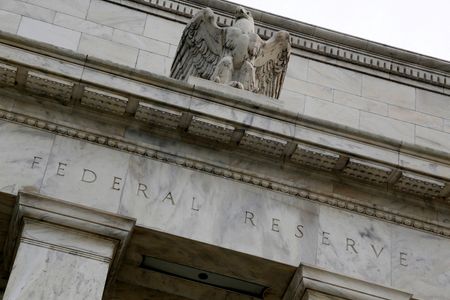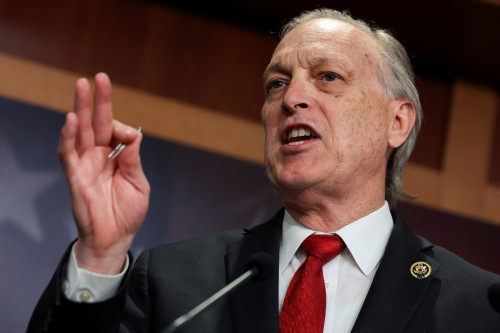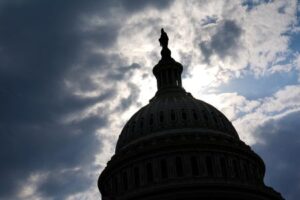By Pete Schroeder
WASHINGTON (Reuters) -The chance for persistent inflation to keep interest rates higher and potential losses in the commercial real estate market are among the top concerns of respondents to a Federal Reserve survey on financial stability, the U.S. central bank said on Friday.
The latest version of the central bank’s semiannual report found that three-quarters of survey respondents cited those two issues as prominent near-term risks. Concerns over bank stability following the failure of three large firms this spring were cited by roughly half, similar to levels seen in the May version of the report.
Economic weakness in China had grown in the Fed’s semiannual survey, cited by 44% of those surveyed as a top risk, compared to just 12% in May. But the war between Russia and Ukraine slipped to the 11th-most cited concern by respondents, after it was cited as the top financial stability concern one year ago.
The Fed noted that its survey of looming risks was closed in early October, before war broke out between Israel and the Palestinian enclave of Gaza.
Overall, the Fed identified several vulnerabilities within the financial system, including historically high asset valuations, including in equities and real estate. Specifically, the Fed found that commercial real estate valuations remain elevated, even as prices have declined amid high office vacancies.
The Fed cautioned that if the economy were to slow unexpectedly, generally high leverage levels could strain or even sink some businesses. It specifically noted a correction in office property valuations alongside a mild recession could lead to “significant losses for a range of financial institutions with sizable exposures, including some regional and community banks and insurance companies.”
While the overall banking system remained sound, the Fed said some banks were still grappling with “sizable” declines in the fair value of some assets as interest rates rapidly increased. Large levels of unrealized losses were a major contributor to the stresses faced by banks, including Silicon Valley Bank, that failed this spring.
The Fed said banks overall have large levels of liquidity, and deposit outflows and volatility have abated since the spring. However, some firms are still facing funding pressures, as some depositors have left and banks have had to pay more to retain depositors or acquire other funding.
The Fed also found home prices increased from already high levels seen in May, although it noted that credit conditions for borrowers is “considerably tighter” than what was seen leading up to the subprime mortgage crisis of 2007-2009.
In fact, banks reported to the Fed that lending standards were now on the tighter end of historical norms for all loan categories.
The report found that household and business debt burdens remained moderate, despite the uptick in interest rates. It warned, however, that borrowers with low credit scores were beginning to show some signs of stress in various types of consumer debt, such as credit cards and auto loans.
(Reporting by Pete Schroeder; Editing by Leslie Adler and Andrea Ricci)








